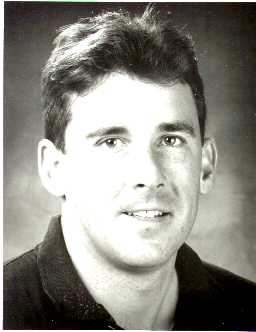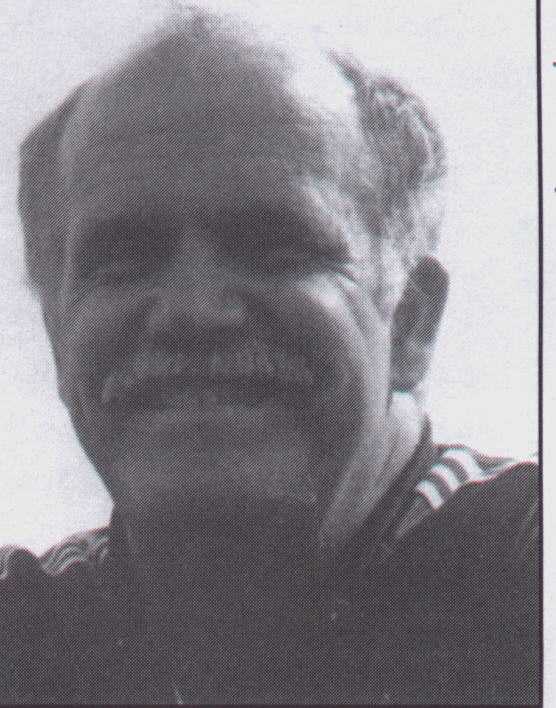 Safety
in the Throwing Events
Safety
in the Throwing Events
Article By: William Byron Pendleton
The importance of safety
in the throwing events cannot be overstated. In high school only
the Pole Vault has a great history of serious injuries incurred
by participants and spectators. In high school the throwing events
concerned are the shot put and discus.
 Teaching
Progressions For Beginning Discus Throwers
Teaching
Progressions For Beginning Discus Throwers
Article By: Don Babbitt University of
Georgia, Athens, GA
The first
step in introducing the discus to the beginner is to give them
a feel for how to hold the discus. To begin, the thrower should
hold the discus in the palm of their outstretched arm (this is
the non-throwing arm). Then place the right fingertips extending
over the edge of the lip of the discus.
Interview with Art
Venegas, Head Track & Field Coach, UCLA
Article By: Joe Bailey
Considered
the premier collegiate men's and women's throwing coach in the
nation, Art Venegas also has a worldwide reputation because of
his coaching expertise with many world-class throwers.
 Train
Light Throw Big
Train
Light Throw Big
Article By: Patrick Wyatt, Sweet Home
HS, Amherst, New York
The method of training
for the shot put I am going to relate to you now, was developed
and used for over 30 years. It has been used by national champions
and beginning throwers with equal success. It has given as much
as a 13 improvement in one season. Most increases in distance
are anywhere from 5 to 10 feet, and this is with veteran throwers.
Zen in the Art of
Throwing
Article By: Tony Ciarelli, Huntington
Beach High School
I have always
felt that preparation for the throwing events was much like preparing
for the martial arts. Not just the physical movements, but the
mental preparation as well. Our dojo (practice hall) is the ring;
we do our kata (practicing of form and movements) much the same
as martial artist perfecting our techniques to the smallest details.
 Coaching
Shot Put for Beginner Throwers Part I
Coaching
Shot Put for Beginner Throwers Part I
Article By Don Babbitt: University of Georgia,
Athens, GA
Step-by-step
teaching progressions can be used to lead the beginning thrower
through the various aspects of shot-put technique, from how to
hold the shot to a full throw using the rotational or glide technique.
Teaching progressions can be an effective way to introduce a highly
technical event like the shot put, which demands coordination
of the legs, trunk and arms, in order to have a successful performance.
It is important that each step of a teaching progression focuses
on a single aspect of technique and that only one
new technical element is introduced with each successive step.
By teaching the shot put in such a progressive manner, the beginning
shot-putter is allowed to learn one step at a time and will not
be overloaded by having to concentrate on many things at the same
time.
 Teaching
Progressions for Beginning Shot Put
Teaching
Progressions for Beginning Shot Put
Part II
Article By Don Babbitt: University of Georgia,
Athens, GA
Part I of
this two-part article illustrated a five-step teaching progression
that taught beginning throwers how to standthrow. Once a thrower
is able to standthrow and feel comfortable with the motion, he
is able to advance to either the glide or the rotational
technique. Part II of this article will cover teaching progressions
for both techniques, beginning with the glide technique. All descriptions
of technique will be for the right-handed thrower.
The Glide
Article By Tony Ciarelli: Huntington Beach high School, Throws
Coach
The Start: Balanced
and Relaxed, weight on a flat right foot, shoulders back and down,
wrapped around the right leg, left leg relaxed and toward the
front of the ring, left arm back and relaxed, shot under the chin,
eyes on focal point or horizon.
WASA~KI~SHIN
Article By Tony Ciarelli: Huntington Beach high School, Throws
Coach
WASA / Technique
There is no right way to do the
wrong thing, technique is everything.
It is crucial that technique is developed to an optimal level
to throw far.
 Training
the High School Discus Thrower
Training
the High School Discus Thrower
Article By Bill Pendleton: Esperanza High
School
Developing
a skilled top level discus thrower requires patience but has many
rewards. To begin with, the discus is an event that requires a
high level of skill. Unlike the sprints or jumps, a decent thrower
is almost never beaten by a superior athlete who walks over and
dabbles in the event. By becoming technically proficient a thrower
of very modest athletic ability will defeat the great majority
of his competitors, and a truly gifted athlete will dominate most
meets short of the prestigious invitationals. In discussing the
training of the discus thrower, I will emphasize coaching approaches
and experiences I have found in developing high school throwers.
I will discuss everything in terms of a right-handed thrower.
reverse all directions for a left hander. Also, in describing
the ring, I will refer to the rear where the throw begins as 12
o'clock with the front being 6 o'clock etc. Developing a top level
thrower has many stages:
![]()




